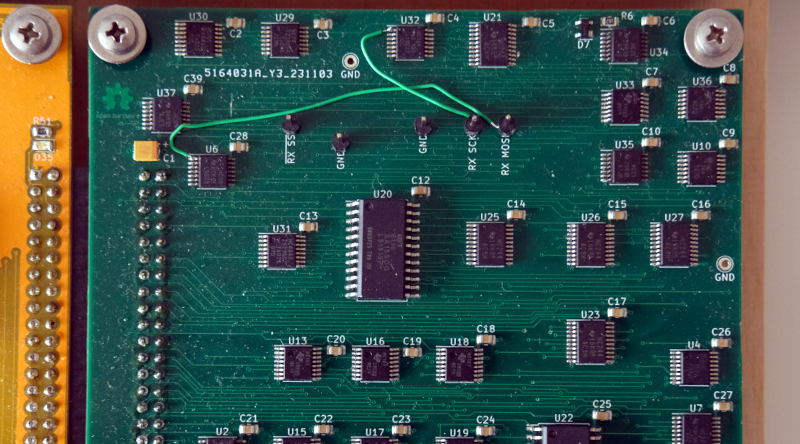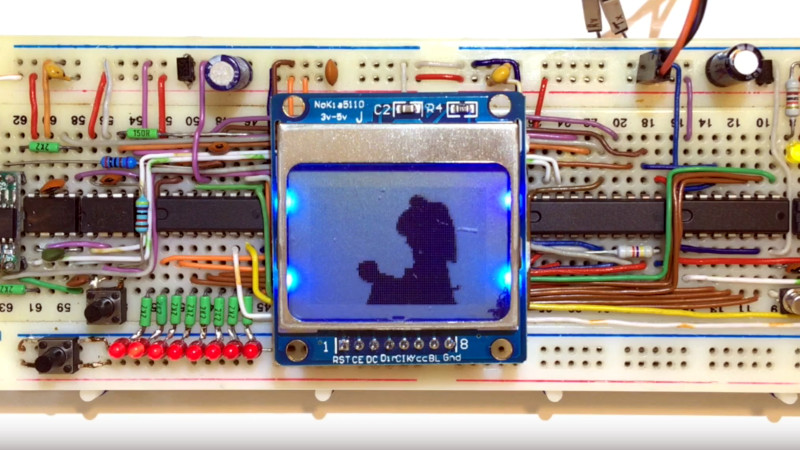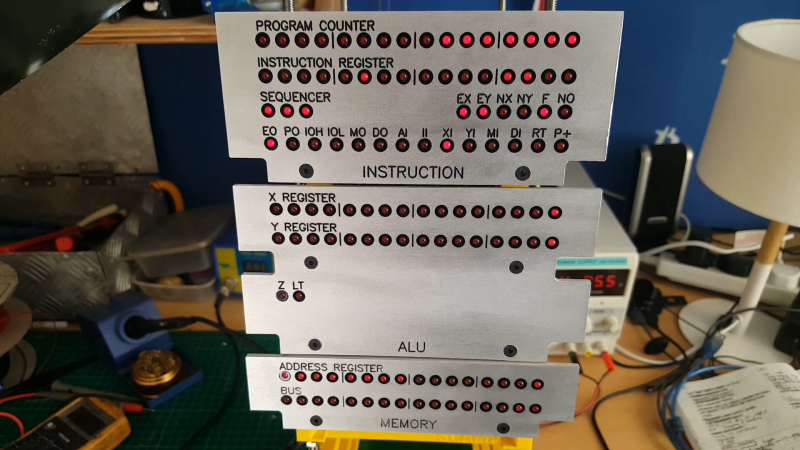How many instructions does [agp.cooper’s] computer have? Just one. How many strip boards does it use? Apparently, 41. While being one shy from the answer to life, it is still a lot of boards for a single instruction. The high board count is due to the use of 1970’s vintage ICs including TTL parts, 2114 RAM chips, and 24S571 PROMs.
There are several different architectures for single instruction computers and [agp’s] uses what is technically at TTA (transfer-triggered architecture). That is, the one instruction is a move and the destination or source of the move determines the operation. For example, …read more
 Continue reading Weird CPU→
Continue reading Weird CPU→


